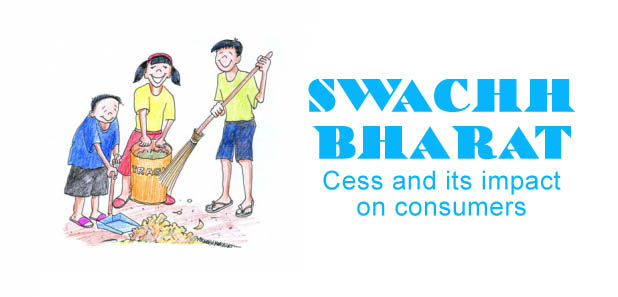Unless you have been living under a rock for the past year, you are aware of the Government’s ambitious Swachh Bharat Abhiyaan, a campaign launched by Prime Minster Narendra Modi on the 145th birth anniversary of Mahatma Gandhi, viz. October 2, 2014. The endeavour was to achieve ‘Clean India’ by 2019.

The specific objectives defined by the campaign are as below:
- Eliminate open defecation by constructing toilets for households and communities
- Eradicate manual scavenging
- Introduce modern and scientific municipal solid waste management practices
- Enable private sector participation in the sanitation sector
- Change people’s attitudes to sanitation and create awareness
In order to achieve these objectives, a funding requirement of INR 62,000 crores was estimated, and while a part of this is being raised in the form of a loan from the World Bank, the rest is to be ploughed in by the Government. And by Government, it is to be understood that the money is going to come out of the pockets of the ordinary taxpayer. Yes, the campaign is to be funded by a tax. It is possible a lot of us missed it, but with effect from November 15, 2015, a cess has been imposed on the Service Tax that we pay, at the rate of 0.5%
The rate of Service Tax itself had been increased in April 2015 from 12% to 14%, and after the imposition of this cess, it will rise to 14.5%. In other words, the rate of Service Tax that we pay had increased by more than 17% since the start of the year.
So what is the impact on you as a consumer?
The obvious answer is an increased outgo from your pocket. So whatever service you presently pay service tax on will now cost a little more – and this covers your restaurant bills, insurance premia, courier charges, telephone bill and electricity bill – well, effectively, everything that is not a pure purchase of goods.
In some type of cases, like restaurant bills or similar services where there is a combination of ‘goods’ and ‘service’, the rate would be computed differently, and work out to 4.35% (versus 4.2% earlier)
On the surface of it, this does not seem like much. Perhaps it is not. On a restaurant bill of INR 2000/-, it works out to an additional charge of only INR 3. But perhaps the true cost of a cess is not in the amount it takes away as it is in the power it takes away from you. There is no limit on how long such a cess could be imposed. Certainly, in India, such add-on taxes tend to persist for a long, long time. It becomes an addition to the burden you bear already, until such time as you are so used to it, that a fresh cess can be imposed. In theory, a cess is supposed to be for a specific period, and for a specific purpose, but there is a running controversy about the correct application on the funds so collected.
In case of the Swachh Bharat Cess, it is specifically required to be separately collected and accounted for by the service provider. The payment of the funds collected under this cess is also supposed to be done separately from the Service Tax. While this imposes an additional burden on the service providers, it does provide prima facie evidence of being tracked separately for specific use to carry out the objectives detailed above.
The true impact of the Swachh Bharat Cess, then, is not on you as a consumer, but as a citizen of India – a small leakage from our wallets, in return for dramatic improvements in the level of public hygiene in our country.































